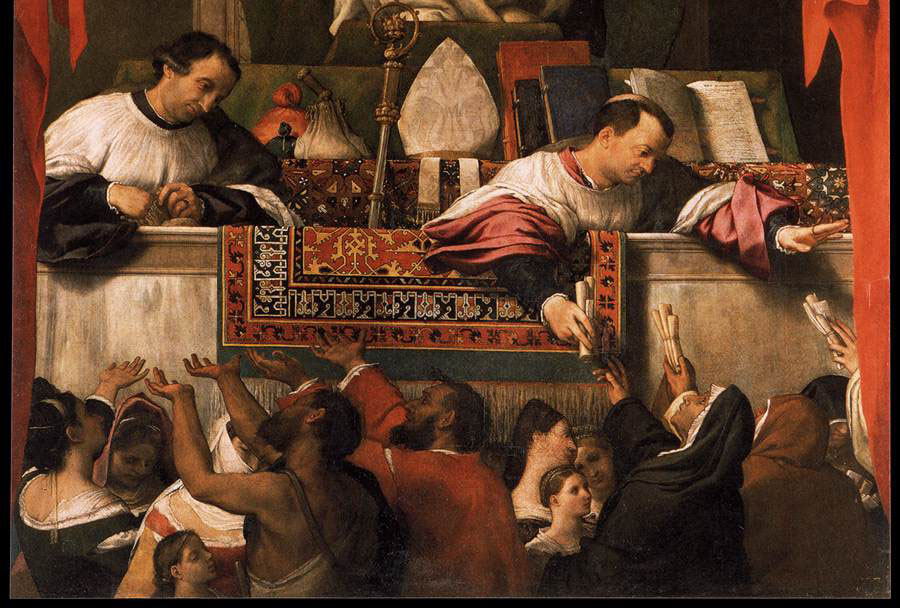
|
"Lotto" Ushak rug, inspired by early Ushak rug depicted in Lorenzo Lotto's "The Alms of St Anthony" (1542) CODE: LTSTA02 Size (metric): 93x144cm Size (ft): 3'0"x4'8" Area: 1.33 m2 Density: 135 000 (35hx38v) knots per square meter, totally ~ 175 000 knots Pile height: 0.4cm Ends: thin braided fringes Weaving period: 2 months Colors: soft madder red, dark navy blue, gold yellow, medium green, medium blue, ivory, dark brown. Dyes: 100% natural dyes: madder, weld (Reseda Luteola), indigo, pomegranate skins, walnut husks, natural brown sheep wool, natural ivory sheep wool - all are eco-friendly and non-toxic Materials: Handcarded and handspun wool for pile, ivory wool warps and red wool wefts Weaver: Sona, a local village woman, who wove this rug in her own house, as a natural part of her daily family routine Design: The arabesque-trellis or so-called 'Lotto' design was popular from its first appearance around 1500. This overall lattice design found here was named for the Venetian artist Lorenzo Lotto (1480-1556) who was one of numerous European artists throughout the 16th and 17th centuries to include carpets with this pattern in their works, see Mills, John, " 'Lotto' Carpets in Western Paintings," Hali, vol 3. no. 4, 1980, pp. 278-289. Prior to this study, the arabesque lattice of these carpets had been examined and further categorized into three groups by Charles Grant Ellis: the 'Anatolian,' 'Kilim' and 'Ornamented,' see Ellis, C.G., "The 'Lotto' pattern as a fashion in carpets," Festchrift fur Peter Wilhelm Meister, 1975, pp. 19-31. The prestige and enduring appeal of 'Lotto' carpets in the west is demonstrated by their appearance in so many paintings as well as by the numbers of rugs and fragments that have survived and that have been the subject of scholarly research. The present example is one of the earliest Lotto designs (1500s). This specific type of Kufic style main border can be seen in the Philadelphia Museum Lotto rug, 67-30-308 |
 "The Alms of St Anthony", 1542, by Italian painter Lorenzo Lotto. Basilica dei Santi Giovanni e Paolo, Venice |
Contact us for more information about this rug

|
For more information about the above rug or to place an order please email vd@azerbaijanrugs.com (Baku, Azerbaijan) or ra@azerbaijanrugs.com (San Francisco Bay Area). We will get back to you within 24 hours or less. |